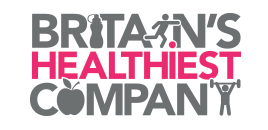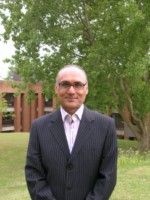It seems that quite apart from the benefits to you personally that healthy living can bring it now seems Britain’s bosses are being urged to take particular interest in the health of their workers.
The move is not a push to reduce accidents in the workplace but stark figures that show that a healthy workforce is a profitable one for their bosses.
Health insurer Vitality Health and consultancy firm Mercer this week launched Britain’s Healthiest Company 2015. The aim is to find and celebrate the country’s most outstanding organisations demonstrating best practice and innovative approaches to looking after the health and wellbeing of their staff.
It is the largest national study in the UK, with the aim of providing employers with insights into the wellbeing of their workers and to celebrate those companies supporting health in the workplace. Companies with at least 50 employees have been invited sign up to participate in the survey which will comprehensively evaluate the effectiveness of workplace wellness programmes and the health of the workforce.
The study analyses lifestyle, behavioural and clinical risk factors including weight, diet, exercise, smoking, alcohol intake, stress, cholesterol and blood glucose levels, blood pressure as well as how often people attend health screenings to monitor and understand their health.
Neville Koopowitz, chief executive of VitalityHealth, said: “The pervasive effect our lifestyles have not only on our own health, but that of the economy as well, is startling. When we calculated the Vitality Age of the respondents to the 2014 survey, it was almost four years older than the real age. Our workforce is, in effect, four years older than it should be. This has a dramatic impact on productivity.
“As this is the third time we have conducted the survey the results will be particularly interesting as it will start to show us a direction of travel for employee health.”
Britain’s Healthiest Company 2014 surveyed over 25,000 employees from 82 companies across a diverse range of industries and employer sizes. The research, which was undertaken by the University of Cambridge and RAND Europe, revealed that sick leave and presenteeism (working while unwell) costs companies, on average, 7.7% of their yearly wage bill. This translated into an estimated total cost of lost productivity to the UK economy of over £58 billion per year.
The insurer said the report last year provided a stark warning of a dormant health time bomb, with nearly two thirds (62%) of employees having at least two bad
lifestyle choices that put them at serious risk of future ill health. The findings highlighted the strong link between these lifestyle risk factors, employees’ health and their performance at work, looking at areas such as: absenteeism, productivity, engagement, and presenteeism. It found that employers are typically left to pick up the bill as unhealthy staff take more time off sick and under-perform at work.
The question remains as to what action employers would look to or could take if they found their workforce was below par health wise. It will in the future pay to be healthy and you can expect corporate gym memberships to rise when the results of this year’s research are published.


